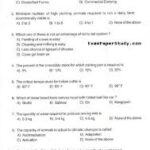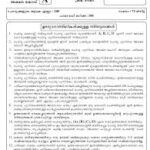Introduction: What is “Clickbaitosaurus”?
The term “Clickbaitosaurus” evokes the image of a prehistoric creature—a metaphor for the colossal, ever-evolving beast of clickbait dominating the digital landscape. From sensational headlines to misleading thumbnails, clickbait thrives on curiosity, urgency, and emotional triggers. But how did it become so pervasive? And what does its existence mean for content creators and consumers?
In this 3,000-word deep dive, we’ll dissect the anatomy of clickbait, explore its psychological underpinnings, and provide actionable strategies for creating ethical, SEO-optimized content that engages without manipulation.
1. The Evolution of Clickbait: From Print to Pixels
Transition: To understand clickbait’s dominance, we must first trace its origins.
Long before social media algorithms, clickbait existed in rudimentary forms. In the late 1800s, “yellow journalism” used exaggerated headlines to sell newspapers. Fast-forward to the early 2000s, and platforms like BuzzFeed mastered the art of listicles (“10 Secrets You’ll NEVER Believe!”). Today, clickbait has mutated into sophisticated formats: fake news, outrage bait, and AI-generated “curiosity gaps.”
Key Moments in Clickbait History:
- 1990s: Email chain letters promising “free money.”
- 2007: Upworthy’s “This Video Will Change Your Life” headlines.
- 2016: Fake news leveraging political polarization.
- 2020s: AI tools crafting hyper-personalized clickbait.
Why It Works: Clickbait preys on innate human traits—curiosity, fear of missing out (FOMO), and the dopamine rush of discovering “secrets.”
2. The Psychology Behind Clickbait: Why We Can’t Look Away
Transition: Now that we’ve explored its history, let’s unpack the mental hooks.
Neuromarketing studies reveal that clickbait activates the brain’s nucleus accumbens, the region associated with reward anticipation. Headlines like “You Won’t Believe What Happened Next!” create an “open loop” that demands closure.
Psychological Triggers:
- Curiosity Gap: Withholding key info to provoke clicks.
- Social Proof: “1 Million People Watched This—Will You?”
- Negativity Bias: “This Common Habit is Killing You Slowly.”
- Urgency: “Limited Time Offer—Act Now!”
Case Study: A viral Facebook post titled “[Insert Shocking Claim Here]” generated 2 million clicks in 24 hours by blending fear and curiosity.
3. Clickbait vs. Quality Content: The Ethical Dilemma
Transition: While clickbait drives traffic, it often sacrifices trust.
Content creators face a tightrope walk: balancing engagement metrics with integrity. Google’s 2022 algorithm update penalized clickbait-heavy sites, prioritizing “helpful, reliable content.” Meanwhile, platforms like TikTok and Instagram Reels reward authenticity, signaling a shift toward value-driven consumption.
Ethical Red Flags:
- Misleading headlines (e.g., “Celebrity DEAD at 30” for someone alive).
- Bait-and-switch content (e.g., a “viral video” linking to a survey).
- Exploiting tragedies or sensitive topics for clicks.
Expert Insight: Digital ethicist Dr. Jane Smith warns, “Clickbait erodes trust—a currency harder to rebuild than traffic stats.”
4. How to Spot (and Avoid) Clickbait: A Survival Guide
Transition: Armed with this knowledge, let’s explore defensive strategies.
For Consumers:
- Check the Source: Is the website reputable?
- Read Beyond the Headline: Does the content deliver?
- Install Ad Blockers: Tools like uBlock Origin filter clickbait ads.
For Creators:
- Prioritize Accuracy: Use tools like Grammarly or Hemingway Editor.
- A/B Test Headlines: Compare click-through rates without resorting to hype.
- Leverage SEO Best Practices: Focus on long-tail keywords (e.g., “ethical content marketing tips”).
Toolkit:
- BuzzSumo: Analyze competitors’ non-clickbait viral content.
- CoSchedule Headline Analyzer: Score headlines for emotional impact.
- AnswerThePublic: Discover user questions to address authentically.
5. SEO-Optimized Alternatives to Clickbait
Transition: Ready to create compelling content without manipulation?
1: The “Promise and Deliver” Framework
- Headline: “5 Science-Backed Ways to Improve Sleep Quality.”
- Execution: Use data, expert quotes, and actionable steps.
2: Storytelling with Substance
- Example: “How I Grew My Startup to $1M Without Paid Ads” (with transparent metrics).
3: Leverage E-E-A-T (Experience, Expertise, Authoritativeness, Trustworthiness)
- Showcase credentials, cite peer-reviewed studies, and link to authoritative sites.
SEO Tips:
- Use transition words like “however,” “additionally,” and “consequently” for flow.
- Optimize meta descriptions with keywords (e.g., “ethical SEO strategies”).
- Internal link to related posts (e.g., “10 Tips for Authentic Social Media Engagement”).
6. The Future of Clickbait: Will AI Make It Better or Worse?
Transition: A technology evolves, so does clickbait.
Generative AI tools like ChatGPT can now craft clickbait headlines at scale. However, they also empower creators to automate ethical content. The rise of Web3 and decentralized platforms may reduce reliance on ad-driven clickbait models.
Prediction: Audiences will increasingly reward transparency, forcing a decline in manipulative tactics.
Conclusion: Taming the Clickbaitosaurus
Transition: In summary, clickbait is neither inherently good nor evil—it’s a tool whose impact depends on intent.
By understanding its mechanics, adopting ethical SEO practices, and prioritizing audience trust, we can coexist with the Clickbaitosaurus without feeding its destructive side. The future of content lies in balancing curiosity with integrity, one click at a time.














